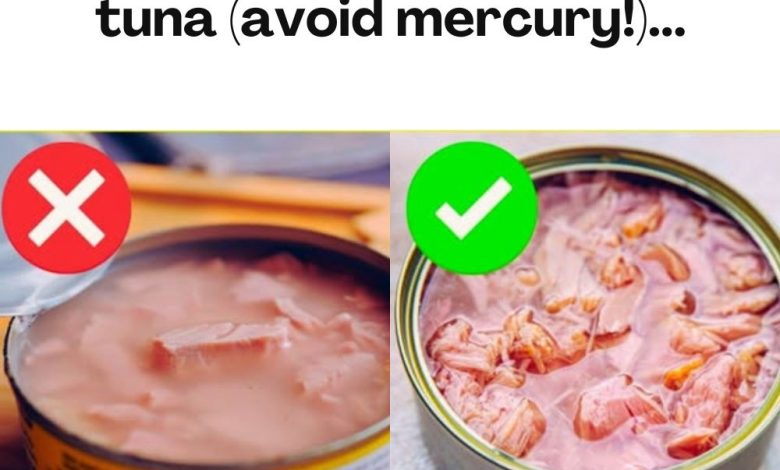War.ning: The #1 Mistake You’re Making with Canned Tuna (Avoid Mercury!)

Canned tuna is a popular choice thanks to its affordability, high protein content, and convenience. However, that simple tuna sandwich might come with a hidden risk—it could contain mercury, a toxic heavy metal that accumulates in seafood and poses health hazards when consumed repeatedly over time.
The tricky part? Not all canned tuna is the same. Different types have varying mercury levels, meaning your favorite snack might unknowingly expose you to harmful amounts.
🔍 Why Is Mercury Found in Tuna?
Mercury naturally exists in the environment but human activities such as coal burning and mining have increased its presence in oceans. Once in the water, mercury converts into methylmercury, a dangerous neurotoxin that builds up in marine animals.
Because tuna are large predators, they consume smaller contaminated fish and accumulate higher mercury levels through bioaccumulation. By the time tuna reaches your pantry, it can contain mercury concentrations high enough to raise health concerns, especially for pregnant women, children, and those with neurological or heart conditions.
⚠️ Common Pitfall: Choosing the Wrong Tuna
Knowing which type you’re buying makes a huge difference:
| Tuna Species | Typical Label | Approx. Mercury (ppm) | Consumption Advice |
|---|---|---|---|
| Skipjack | “Light tuna” | ~0.12 | Safest for regular eating |
| Yellowfin | Sometimes “light” | ~0.35 | Limit to occasional meals |
| Albacore | “White tuna” | ~0.50 | Significantly limit intake |
📝 Pro tip: When labels aren’t specific, it’s usually skipjack—but always double-check if you can.
💡 Other Tuna-Related Missteps to Avoid
- Ignoring labels: Some brands provide better info on mercury and sourcing. A quick online search can help.
- Overconsumption: Health experts advise no more than 8 ounces of seafood weekly, particularly for sensitive individuals.
- Poor draining: Properly draining canned tuna removes excess liquid and potential contaminants, plus keeps your sandwich from getting soggy.
🥫 Oil-Packed vs. Water-Packed Tuna: What’s Safer?
You might assume water-packed tuna is cleaner, but here’s a twist:
- Mercury binds to fat, so oil-packed tuna might actually contain less mercury. Draining the oil thoroughly helps remove some of the toxin.
- Oil-packed options usually have more omega-3s and vitamin D, though with extra calories.
- Water-packed tuna is leaner but may retain more mercury since it lacks fat to bind with.
For minimizing mercury, well-drained oil-packed tuna could be the better choice.
✅ How to Enjoy Tuna Safely
- Opt for skipjack (light tuna) as your go-to.
- Choose brands that clearly disclose sourcing and mercury levels.
- Mix up your diet with other low-mercury fish like salmon, sardines, trout, and mackerel.
- Follow serving size recommendations, especially for kids and pregnant individuals.
💬 Bottom Line
Tuna offers great nutrition—but only if you’re mindful of mercury risks. By making informed choices, reading labels carefully, and varying your seafood, you can savor tuna’s benefits while keeping your health protected.
So next time you grab a can, take a moment. Your well-being deserves that extra thought.



